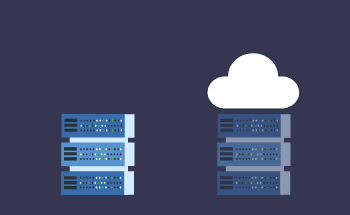5 Reasons Why AlmaLinux Outperforms CentOS as an Alternative
08:50, 31.07.2023
AlmaLinux is a free and open-source Linux distribution that serves as a reliable replacement for CentOS, addressing its limitations and providing a stable and compatible alternative for businesses and individual users. Developed and maintained by an active community, AlmaLinux offers a platform where creativity can thrive, supported by the slogan "for the community, by the community." Since its initial release in 2021, AlmaLinux has gained popularity and achieved a dedicated user base.
CentOS, short for Community Enterprise Operating System, has long been a popular free Linux distribution, offering an advanced alternative to Red Hat Enterprise Linux (RHEL) without the obligation of support fees. However, CentOS 7 users received disappointing news that the operating system would be discontinued by the end of 2024, leaving them with less than a year to find an alternative.
CentOS Stream emerged as the successor, primarily serving as a platform for software testing and development. However, many users expressed concerns about its stability and bugs compared to the original CentOS Linux. Another option, CentOS EoL, also fell short as a replacement.
Thankfully, the creator of CentOS, Gregory Kurtzer, foresaw this situation and had a plan to make sure that CentOS fans would be satisfied if it ever reached the end of its existence.
To understand the creation of Rocky Linux and AlmaLinux, it is important to dive into their context.
CentOS and AlmaLinux share many similarities and have more in common than differences. Both operating systems offer a 10-year support cycle for software updates and are downstream distributions of Red Hat Enterprise Linux. They are community-driven and free, providing users with accessible and collaborative environments. Plus, CentOS and AlmaLinux utilize the RPM format for package management, further enhancing their similarity and compatibility.
Here are five reasons why Almalinux is a better alternative:
Strong Compatibility
AlmaLinux offers a seamless and smooth migration experience for customers transitioning from CentOS, getting rid of any concerns about compatibility issues. Not only does AlmaLinux ensure smooth compatibility with CentOS, but it also extends this compatibility to the extensive majority of software packages, requiring minimal or no modifications for a seamless transition. This compatibility further extends to a wide range of hardware and software environments, positioning AlmaLinux as an optimal selection for businesses. with diverse application and service requirements.
AlmaLinux goes beyond compatibility with its support for popular cloud platforms such as AWS, Azure, and GCP, enabling effortless integration into cloud environments. Additionally, AlmaLinux is compatible with various hardware platforms, including x86, x86-64, ARM, and PowerPC, providing flexibility and versatility for dedicated server hardware deployments.
For developers seeking containerized deployments, AlmaLinux supports industry-standard container technologies like Docker. This ensures that applications can be easily deployed and managed within containerized environments. Furthermore, AlmaLinux offers robust virtualization support, making it suitable for virtualized server deployments utilizing platforms such as KVM, VMware, and Hyper-V.
With its extensive compatibility and versatility across different infrastructure setups, AlmaLinux empowers users to confidently migrate and optimize their server environments based on their unique requirements and needs.
Improved Performance
AlmaLinux takes performance seriously and aims to provide an outstanding user experience in terms of speed and responsiveness. The system is carefully crafted to make efficient use of your system's resources, such as memory, processors, and input/output operations. This optimization has a great impact on the performance of your applications, resulting in faster execution, reduced delays, and a responsive and efficient system experience. AlmaLinux achieves this by implementing a range of enhancements, including advanced memory management techniques, support for the latest hardware technologies, and improved handling of input/output operations. Moreover, AlmaLinux's streamlined build process ensures that only the essential packages are included, eliminating unnecessary clutter and allowing your system to run lean and efficiently. This optimal resource utilization contributes to the overall performance boost you experience when using AlmaLinux.
High level of security
Security is a top priority for AlmaLinux, and it goes above and beyond to provide a secure environment for your server. One of the key elements of its security architecture is the hardened kernel, which is specially designed to resist and minimize various cyber threats and attacks. AlmaLinux also includes a range of advanced security tools and features to enhance the overall protection of your server environment. These include SELinux, which adds an additional layer of security by enforcing access controls and preventing unauthorized actions, as well as firewalls and antivirus software that help safeguard against external threats. With AlmaLinux, you can have peace of mind knowing that your data and systems are shielded from potential vulnerabilities and breaches, allowing you to focus on your work without compromising on security.
Strong Compatibility
AlmaLinux offers an intuitive and user-friendly interface that simplifies the transition from CentOS to AlmaLinux, ensuring a smooth and seamless experience for users. With a focus on compatibility, AlmaLinux ensures that users can effortlessly accomplish migrate their existing software packages, configurations, and workflows to the new operating system without feeling any compatibility problems. This compatibility extends to a diverse array of applications and services, allowing businesses to continue their operations without any disruptions.
The user interface of AlmaLinux is designed to provide a seamless and intuitive experience. With its clean and organized layout, users can effortlessly navigate through menus, access system settings, install applications, manage files and folders, and perform various tasks with ease. The interface is visually pleasing, featuring intuitive icons and intuitive navigation elements that guide users through the system's functionalities.
Moreover, AlmaLinux's compatibility extends beyond just software packages. It adapts to a wide range of business requirements, accommodating different workflows and operational needs. Whether it's a small business, a large enterprise, or a specialized industry, AlmaLinux provides the flexibility and adaptability to meet diverse demands. This flexibility makes AlmaLinux a suitable choice for organizations across various sectors, such as finance, healthcare, education, and more.
By offering a seamless transition to AlmaLinux, businesses can embrace the benefits of AlmaLinux's enhanced features, performance optimizations, and security enhancements without any disruptions to their day-to-day operations. The intuitive user interface of AlmaLinux further enhances the user experience, empowering users to efficiently manage their systems and focus on their core tasks.
Intuitive user interface
The user interface of AlmaLinux is designed to be intuitive and user-friendly, making it easy for both beginners and experienced users to navigate and manage their system. The graphical user interface (GUI) provides a visually appealing and interactive environment, allowing users to interact with the operating system through icons, menus, and windows. With a clean and organized layout, users can easily access and configure system settings, install applications, manage files and folders, and perform various tasks with minimal effort. The intuitive user interface of AlmaLinux contributes to a seamless and enjoyable user experience, enhancing productivity and simplifying system administration.
Does AlmaLinux Belong to the Red Hat Enterprise Linux Family?
Indeed, AlmaLinux is part RHEL family. It is a distribution that is based on RHEL and is specifically created to be a seamless replacement for CentOS, which also belonged to the RHEL family. The main goal of AlmaLinux is to deliver a dependable Linux distribution that mirrors the compatibility, security, and functionality of RHEL. Being part of the RHEL family brings numerous advantages to AlmaLinux, such as a strong and resilient architecture, industry-standard security measures, and a expansive collection of software packages and tools. By inheriting these features, AlmaLinux delivers users with a stable and reliable platform that aligns closely with the renowned RHEL ecosystem.
Which Kernel Does AlmaLinux 9 Use?
AlmaLinux 9 relies on the Linux kernel as its core, responsible for managing system resources like processors, memory, and I/O operations. Acting as a bridge between software and hardware, the kernel enables seamless communication between the two.
AlmaLinux 9 is equipped with Kernel, designated as a Long-Term Support (LTS) version. This LTS status guarantees a stable and dependable foundation for the operating system. With the 5.10 kernel, AlmaLinux 9 benefits from new features, improved hardware compatibility, bug fixes, and security updates. By leveraging an LTS version, AlmaLinux 9 ensures remarkable stability, making it an excellent choice for enterprise environments.
Are AlmaLinux and CentOS Identical?
CentOS and AlmaLinux are similar as downstream distributions of Red Hat Enterprise Linux (RHEL), r eceiving many core features and functionalities. They both provide long-term support with a 10-year software update cycle, ensuring reliability and minimizing the need for frequent upgrades. Both operating systems are open-source and community-driven, promoting collaboration and support among users. AlmaLinux specifically addresses the transition from CentOS to CentOS Stream, offering a seamless migration path with 1:1 binary compatibility with RHEL. This helps CentOS users to switch to AlmaLinux effortlessly, preserving their workflows and configurations.
Is Rocky Linux a Superior Linux Distribution Compared to AlmaLinux?
The key distinction between AlmaLinux and Rocky Linux lies in their supporting communities and non-profit foundations, as well as their release schedules. While both distributions serve as rebuilds of Red Hat Enterprise Linux and serve as alternatives to CentOS, the specific communities and foundations behind them might vary slightly.
Can AlmaLinux Be Considered as the Successor to CentOS?
If you're contemplating a transition from CentOS, you have several options to consider. One such option is CentOS Stream, which can be a suitable choice if your workload is compatible with its nature as a rolling-release distribution. However, if you prefer a more direct replacement for CentOS, AlmaLinux presents itself as a sensible alternative. AlmaLinux strives to be a 1:1 binary-compatible drop-in replacement for CentOS, making the migration process straightforward and understandable. Switching from CentOS to AlmaLinux offers a seamless transition path for users seeking a reliable and familiar environment.
How Do CentOS and RHEL Differ from Each Other?
CentOS and RHEL (Red Hat Enterprise Linux) differ in terms of support, updates, branding and trademarks, packages and repositories, and use cases. RHEL offers official support from Red Hat, while CentOS is community-driven and lacks official support. RHEL receives timely updates directly from Red Hat, while CentOS has a delay in receiving updates as it rebuilds the source code of RHEL. RHEL carries the Red Hat branding and trademarks, while CentOS does not. RHEL offers a greater variety of certified and supported packages, which includes exclusive software, while CentOS centers its focus on free and open-source packages RHEL is often chosen by businesses that need official help and certifications, while CentOS is well-liked for community projects, testing, and less important systems.


